Solar energy and its systems
Solar energy and its systems
Solar energy and its systems. The solar energy sector is one of the most important sectors in the world, because it constitutes an important economic pillar for many countries, especially in the Middle East.
The sun provides us with heat and light, which are the basis of life. It consists of a fiery gaseous mass about a million times the size of the Earth, and its diameter is more than 100 times larger than the Earth.
The temperature of the center of the sun reaches more than 15 million degrees Celsius, and powerful rays emerge from it that reach the Earth after passing through outer space for a distance of 150 million kilometers, but what actually reaches us is a very small percentage of the power of the rays that come out of the sun, and it is the part that supplies Earth energy.
Solar energy and its systems
It is known that the countries located on the equator are the countries that enjoy approximately one season throughout the year, which is summer, and thus the sun’s rays remain present in these countries throughout the year.
Countries near the equator also enjoy this weather, while residents of the northern and southern regions of the equator are aware of the four seasons during the year.

Solar radiation
Solar radiation is known as the power incident per unit area, and the most popular unit used to measure it is the watt per square meter (W/m2). The unit is used in solar energy systems to determine efficiency and other uses.
In general, on sunny days, the largest amount of solar radiation that reaches the Earth is the rays of noon, when sunlight is perpendicular to the Earth’s surface, while at sunrise and sunset, the Earth receives the least amount of radiation throughout the day.
The effect of clouds on solar radiation
The amount of solar radiation that reaches the Earth varies from one period to another due to changing weather conditions and the changing position of the Earth in relation to the Sun during one day and throughout the year.
There are many weather factors that mainly affect the amount of sufficient solar radiation reaching the Earth, including clouds, as clouds reduce the amount of solar radiation depending on the amount of clouds and may even block the sun’s rays from the Earth in the winter.
As we mentioned, the maximum value of the amount of solar radiation that radiates on the Earth’s surface is at noon. This amount changes depending on the hours of the day and the location, in addition to some weather effects such as the presence of clouds.
Solar beams reaching Earth
There are three types of radiation reaching the Earth, which represent 50% of solar radiation:
- Direct solar radiation from the sun.
- Scattered and volatile solar radiation in the atmosphere.
- Solar radiation reflected on other surfaces.
Systems connected to the electricity grid (ON-Grid)
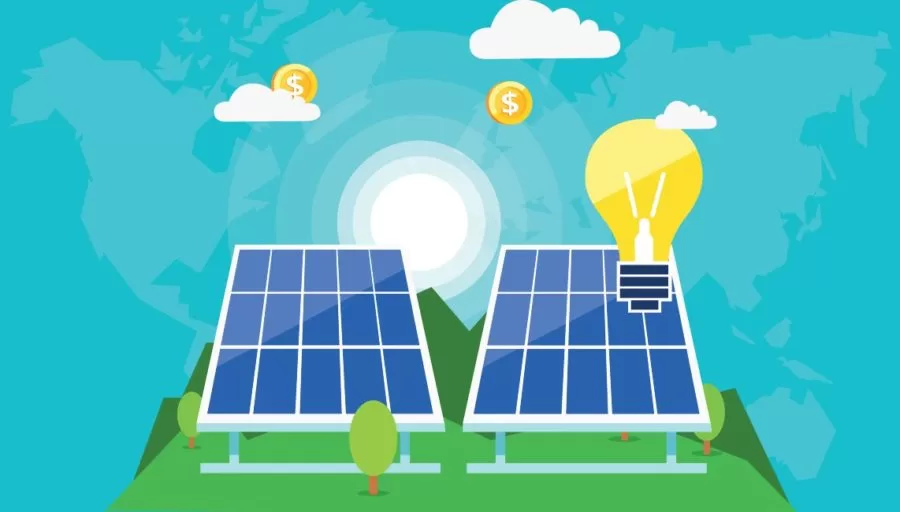 Systems connected to the electricity grid (ON-Grid) are systems whose design and names depend on the local electricity network.
Systems connected to the electricity grid (ON-Grid) are systems whose design and names depend on the local electricity network.
The system can be exploited as an investment project in producing electrical energy and selling it to the local electricity company, by conducting a feasibility study on the system in order for it to last for the longest possible period, and to also ensure that a sufficient amount of energy is produced to suit your needs.
Photovoltaic systems
Electrical loads are fed from solar panels based on the type of solar system that was created, as there are two main types of photovoltaic systems that are widely used, which are classified according to whether the solar system is connected to the public electricity grid or not, and they are:
- Systems connected to the public electricity grid (ON-Grid System).
- Systems independent of the public electricity grid (OFF-Grid System).
Systems connected to the public electricity grid
They are solar systems that are connected to the public electricity network, as they do not need a means of storing electrical energy (batteries), that is, when the amount of electrical energy production from the solar system exceeds the amount required for the loads, such as in the summer, if the surplus energy is pumped into the network. Local electricity.
If the solar system is unable to cover the entire required load as it is in the winter, the required amount is consumed from the local network and the solar system.
These systems are the most widely used and widespread in areas close to the electricity network. They are also distinguished from isolated systems in their ease of construction, lack of system components, in addition to their low cost of construction compared to systems separated from the network.
Components of a networked system
This system consists of the following elements:
- Solar panels: They generate the necessary energy according to the total capacity of the solar panels.
- Electrical inverter: used to convert the direct voltage (DC) coming from solar panels into alternating voltage (AC).
- Electrical energy metering system: (in English: Metering System), is installed within the system connected to the local electricity network, and the electrical energy, whether produced from the solar system or consumed from the local network, has a cost, so a measuring device must be installed for this to calculate the electrical energy.
Designing an off-grid solar system
Designing an off-grid solar system is a very important topic for every electrician and beginner in the field of solar energy.
The article discusses how to design a solar system separate from the grid, starting with calculating the electrical loads, passing through the number of solar panels and electric batteries, to the charging regulator and inverter, and finally estimating the diameter of the cables designated for solar energy.
Objectives of good solar system design
- First: To obtain the best performance of the solar system based on the lowest possible costs, by covering all recommended electrical loads when there is a shortage and operating it 24 hours a day without interruption. /span>First:
- Third: Ensure that the components of the solar system are preserved, including: solar panels – batteries – inverter – charging regulator.
Now that we know the goals of good solar system design, we will gradually go into the steps of designing a solar system separated from the grid to make the mathematical calculations easier for everyone.
Steps to design a separate solar system
- First: Calculating the size of the electrical loads required to be operated during the day.
- Second: Calculating the size of the electrical loads required to be operated at night.
- Third: Calculate the total energy consumed by solar panels.
- Fourth: Calculating the capacity of the necessary solar panels.
- Fifth: Limiting the number of solar panels needed.
- Sixth: Calculating the size of electric batteries.
- Seventh: Calculating the size of the solar charging regulator.
- Eighth: Connecting solar panels based on charging regulator data.
- Ninth: Calculating the appropriate inverter size.
- Tenth: Calculating the cross-section of solar energy cables.
- Eleventh: Drawing a diagram of the solar system.
Calculating the size of electrical loads
- Schedule of loads to be operated during the day:
| Pregnancy | Ability | the number | Duration of operation | Energy consumed |
|---|---|---|---|---|
| Inverter type refrigerator | 100W | 1 | 5 | 500W.H |
| TV screen | 60W | 1 | 6 | 360W.H |
| computer | 80W | 1 | 6 | 480W.H |
| Air fan | 95W | 2 | 7 | 1330W.H |
| Total total energy consumed daily (watt hours) | 2670W.H |
Where: consumed energy = power x number x operating duration
- Schedule of loads to be operated at night:
| Pregnancy | Ability | the number | Duration of operation | Energy consumed |
|---|---|---|---|---|
| Lamp | 18W | 9 | 8 | 1296W.H |
| Lamp | 9W | 3 | 4 | 108W.H |
| computer | 80W | 1 | 5 | 400W.H |
| TV screen | 60W | 1 | 5 | 300W.H |
| Air fan | 95W | 1 | 4 | 380W.H |
| Total total energy consumed daily (watt hours) | 2484W.H |
Calculate the total energy consumed by solar panels
From the previous electrical load tables:
Energy consumed during the day = 2670 watts. hour
Energy consumed at night = total energy consumed at night x battery loss factor (1.25)
= 2484 x 1.25 = 3105 watts. hour
We all know that the battery has internal losses, losses in cables, temperature coefficient, and other things, so we always work to add 25% to the value of the total energy that is to be consumed from the battery at night.
Total energy consumed by the solar panel array = energy consumed during the day + energy consumed at night
= 2670 + 3105 = 5775 watts. hour
Calculate the required solar panel capacity
Solar panel capacity = total power required from the solar panel array ÷ number of maximum sun hours
= 5775 ÷ 5 = 1155 watts
Here, the loss resulting from the solar panels due to the efficiency of the solar panel, inverter, solar charging regulator, cables, etc. must be compensated by adding a safety factor of 50% above the capacity of the solar panels to become 1.5, in order to obtain the actual or real capacity of the solar panels as follows:
Actual solar panel capacity = solar panel capacity x loss factor of the solar system
= 1155 x 1.5 = 1732.5 watts
Sizing the number of solar panels needed
In this article, we will rely on a 300W solar panel, and the number of solar panels can be found as follows:
Number of solar panels = actual solar array capacity ÷ capacity of one solar panel
= 1732.5 ÷ 300 = 5.7 solar panels
We need 6 solar panels with a capacity of 300 watts, each poly type solar panel manufactured by “Canadian Solar”.
Total energy produced = number of solar panels x solar panel capacity
= 6 × 300 = 1800W
So the total capacity of the solar panels is 1800W.
On what basis is the appropriate solar panel capacity selected?
- Depending on the efficiency of the solar panel for the purposes of available space.
- Depending on the operating voltage range of the solar charging regulator, as well as the current it absorbs.
- Depending on the capacity of the solar charging regulator as well.
- Depending on the cost of the solar panel.
Calculating the size of electric batteries
Here we will set the discharge depth ratio in the design to 50%.
Total battery power = power consumed at night ÷ depth of discharge (DOD) percentage
= 3105 ÷ 0.5
= 6210 watts. hour
If a battery with specifications (12V/250Ah) is chosen, we calculate the total energy in the battery as follows:
Total power in battery = battery capacity x rated battery voltage
= 250 x 12 = 3000 watts. hour
Number of electric batteries needed = total battery power ÷ total battery power
= 6210 ÷ 3000 = 2.07 battery
Therefore, you need two batteries with specifications (12V/250Ah), which are connected in series to obtain 24 volts, because the voltage of the solar system adopted in the design is 24 volts, so the total energy of the two batteries if they are connected in series is as follows:
The power of the two batteries = the current of the one battery connected in series x the total voltage of the batteries connected in series
= 250 x 24 = 6000 watts. hour
Calculate the size of the solar charging regulator
An important step in designing the solar system. It is necessary to coordinate between the solar panels connected to the system and the data of the charging regulator so that things can be done as completely as possible without any problems in the system at the moment of operation or as a result of weather factors that may increase the voltage of the solar panels.
There are four important points to consider when choosing the appropriate solar charging regulator:
- Determine the capacity of the solar charging regulator so that it is the same or higher than the total capacity of the solar panels.
- Determine the maximum voltage at which the solar charging regulator operates.
- Determine the maximum current of the charging regulator so that it can handle panel current and charging current together.
- It is preferable that the operating voltage range of the charging regulator be wide so that you can connect more solar panels in series.
Here you will need a charging regulator with the following specifications:
Power: 1800W
Current: 75A
Voltage: 24V
In general, the choice of the charging regulator depends on the capacity of the solar panels and the voltage of the solar system. We obtained the charging regulator current by dividing the total capacity of the solar panels by the voltage of the solar system.
Based on the previous conditions, the most suitable charging regulator is model PC18-6015F, and its shape is as shown in the following picture:
How to connect a solar panel array
The method of connecting the solar panel array depends on the charging regulator data. The charging regulator data and the solar panel data must be coordinated in two matters:
- The total solar panel voltage should be in the middle of the charge regulator’s working range.
- The total open circuit voltage of the panels must be less than the open circuit voltage of the regulator.
We note that if the maximum current that the solar charging regulator can withstand is mentioned, then you must take this into account when connecting several groups of solar panels in parallel.
As shown in the data of the charging regulator we chose, the maximum open circuit voltage it can withstand is 145V, and the operating voltage range is between (30-130V).
Using the operating voltage range of the solar charging regulator and the operating voltage of the solar panel, we can determine the middle value as follows:
The value of the middle operating voltage = (minimum voltage + maximum voltage) ÷ 2
= (30 + 130) ÷ 2 = 80V
Based on the above result, and that the operating voltage of the solar panel is 32.7V, the number of panels to be connected in series:
Number of panels in series = the average value of the operating voltage of the regulator ÷ the value of the operating voltage of one solar panel
= 80 ÷ 37.2 = 2.15
We round the number to 3 solar panels to get a voltage of 98.1V, which is less than the maximum operating voltage of the regulator of 130V. This reduces the total current of the panels if two groups are connected instead of three groups in parallel, then the total current value becomes 18.36A.
Calculating the appropriate inverter size
There are several points that determine the appropriate inverter size based on:
- Inverter capacity.
- Input voltage and output voltage.
- Output waveform.
- The inverter’s tolerance for starting current.
The capacity of the inverter is determined to be higher than the total capacity of the possible electrical loads that are operating at the same time, and some sudden loads that will generate a high take-off current must be taken into account the moment they are switched on.
Minimum inverter capacity = capacity of loads that will work simultaneously x 1.5
Electrical load capacity = total energy consumed during the day ÷ minimum number of maximum sun hours
= 2670 ÷ 4 = 667.5 watts
Inverter power = 667.5 x 1.5 = 1001.25 watts
So you can choose an inverter with a capacity of 1 kilowatt and not in kilovolt-amperes (KVA). Pay attention to that, but in the case of a high starting current, you must double the required inverter capacity, and choose a 2-kilowatt inverter.
It must also be taken into account that the inverter’s input voltage is compatible with the solar system’s voltage, which is 24V, and the output voltage is compatible with the operating voltage of household electrical appliances, 220V or 110V.
Notes on how to calculate inverter capacity:
- The value of the total loads to be operated during the day is multiplied by the same time on the basis that the average solar radiation is only 4 hours.
- Then multiply the result by a safety factor of 1.5 to ensure that the inverter can handle the total capacity of the electrical loads. It is preferable to double the factor to 2 in the case of a load that generates a high starting current.
Design of a 12V solar energy system
Designing a 12V solar energy system. This type is considered one of the most popular types used in small solar energy systems that do not exceed 1 kilowatt.
This system is specifically used to operate simple and light electrical devices such as: lighting units, television screens, and computers only, and the rest of the energy produced is allocated to charging the batteries.
Follow this article with us to learn more details about how to design a solar energy system that operates on 12V.
Solar Panels
The voltage of the solar panels must be chosen so that it is compatible with the voltage of the solar system, that is, if the voltage of the solar system operates at 12V, the voltage of the solar panel must be at least 18V so that it can provide sufficient voltage to charge the batteries. Here, it is preferable to choose a solar panel with a capacity of 150W, because its voltage is suitable. To work on a 12V system.
Important note: Some companies recommend that the number of solar panel cells suitable for a 12V system is 36 cells.
What is the difference between open circuit voltage and working voltage of a solar panel?
Open circuit voltage: means the panel voltage when there is no load on it, that is, the panel terminals are not connected to the loads.
The working voltage of the solar panel: means the voltage of the panel when you load it, that is, by connecting its terminals to operate electrical loads.
Solar batteries
It is considered one of the most important elements of a solar energy system isolated from the grid, as solar batteries store electrical energy coming from solar panels and passing through the charge regulator into chemical energy inside the batteries and then converting the chemical energy into electrical energy upon discharge.
If we want to connect more than one battery, they must be connected in parallel to increase the amperage capacity only, not the voltage, because the system operates on a voltage of 12 volts.
Voltronic inverter 12V/off-grid
It is a special type of solar energy system, and the device internally contains the following parts:
Inverter: The input voltage must be compatible with the voltage of the solar system, that is, if the system voltage is 12V, the input voltage of the inverter must be 12V, and its function is to convert the direct current coming from AC panels to power electrical appliance loads (from 12V/DC to 220V/AC or 110V/AC).
Charger: The charging voltage must be compatible with the batteries voltage, that is, if the batteries voltage is 12V, the charging output voltage must be 12V/DC.
Charging regulator: The voltage of the charging regulator must be compatible with the voltage of the solar system, that is, if the system operates on 12V/DC, the voltage of the charging regulator must be 12V/DC, and its function is to work on Regulating the voltage and current of the solar panels to match the battery voltage, electrical loads, and inverter input.
Design of a 12V solar energy system
Connecting solar panels with battery and load to the system (12V DC)
Connecting the solar panels with the battery and the load to the (12V DC) system, in order to connect a solar system consisting of simple parts such as the solar panel, a battery, and a load that operates on direct current at a voltage of 12V; It is necessary to have a solar charge regulator in order to regulate the voltage of the panels, charge the battery or batteries with an appropriate voltage and current, and also operate direct current (DC) loads with a voltage of 12V and not Any other effort.
In this article we will show you how to connect solar panels with battery and load to a 12V DC system.
Building a 12VDC solar system
Firstly, there are three types of solar energy system voltages: (12VDC system, 24VDC system, 48VDC system), and each type is used according to the size of the system you need based on the total capacity of the electrical appliances.
That is, if you want a system up to 1 kilowatt, then a 12VDC system is suitable, but if you want a system size of 2 kilowatts, the most suitable voltage for it is 24 volts, and above that you need a system with a voltage of 48VDC.
In our topic, we are satisfied with a small system with a voltage of 12 VDC, in order to facilitate the process of explaining and communicating information to everyone as simply as possible.
12VDC system components
A small solar power system that operates only on direct current requires three basic components:
- Solar panels: We need it to generate electrical energy in the form of direct current (DC).
- 12VDC electric battery: Its mission is to store direct current energy for use at night or during cloudiness.
- 12VDC charging regulator: Its function is to regulate the output voltage of solar panels, charge the battery with an appropriate voltage, operate 12VDC loads, and also protect all components of the solar system from any malfunction that may occur.
Notes about connecting solar panels with battery and load (12VDC)
There are several notes that must be taken into account when designing and connecting solar panels with a battery and a load in a 12VDC system, and they are as follows:
- The total capacity of the electrical loads must not exceed the maximum load current of the charging regulator, meaning that the manufacturer of the charging regulator sets two important values for you to consider: the maximum charging current and the maximum load current.
- If the charging regulator has specifications: (12VDC/20A), meaning 240W, this does not mean that loads with a capacity of 240W can be installed. Rather, it must be taken into account that there is a battery that requires a charging current of at least 10A, and it is not permissible to charge the full capacity of the charging regulator, but rather it must Loading is only 70% to 80% of the regulator’s full capacity.
- Make sure that you connect one battery with a voltage of 12VDC, or two batteries connected in parallel to the charging regulator, and if you connect two batteries in series you get a total voltage of 24VDC, and this causes the charging regulator to malfunction.
- Avoid connecting an electrical device designed to operate on alternating current (AC) to the terminals of a charging regulator intended for DC loads.
Important note: Any off grid solar system, its capacity must be divided into two parts, a portion of the generated energy is allocated to charging the battery or several batteries, and the remaining energy is allocated to operating DC loads from the charging regulator.
That is, if we have a 12V solar system, with a total capacity of 300W, 150W of the power must be allocated to charging the 12V battery, and the other 150W should be allocated to powering DC loads. What we conclude is that the solar system cannot operate 300W electrical loads as long as the battery capacity is not fully charged.
How to connect solar panels with battery and load
- Connect the two ends of the panel or solar panels (positive and negative) to their respective port on the charging regulator, taking into account the polarity.
- Connect the two ends of the battery (positive and negative) in the place for the batteries, taking into account the polarity.
- Connect the two ends of the DC loads (positive and negative) to their respective points on the charging regulator.
The charging regulator operates direct current loads directly during the day and during the battery charging process, and it also works to feed the loads from the battery in the event that solar panels are not available.
The batteries are charged from solar panels within a period of time that depends on the battery capacity and the amount of energy generated by the panel based on sunlight.
Design of a 24V solar energy system
Designing a 24V solar energy system. It is necessary to know how to design a 24V solar energy system, when to use it, and what components are required to make a 24V solar energy system.
Components of a 24V solar power system
A 24V DC solar system simply consists of the following components:
- Solar Panels.
- 24V charging regulator.
- Inverter for 24V solar system.
- Two batteries, each 12 volt battery.
We will talk about each component of the 24V solar energy system in detail with illustrative connections to make it easier for everyone to understand and imagine.
Solar Panels
A 24V solar system needs the panel or solar panel voltage to be at least 33V to 36V so that we maintain a higher voltage than a 24V system.
We note that the voltage of the solar panel at load is Vmpp, and the capacity of the solar panels must also be sufficient to charge the two batteries in the worst case scenario.
If you have a solar panel with a capacity of 150 watts and a voltage of 18 volts, you can connect two panels with the same specifications in series to obtain a total voltage of 36 volts in order to ensure that the voltage of the panels is higher than the voltage of the solar system.
24V charging regulator
Every solar system requires a suitable and compatible charge regulator voltage with the system voltage as well as current so that it can handle the total solar system current.
Because we want to design a solar energy system with a voltage of 24 volts, we also need a charging regulator designed to work on 24 volts, that is, inside it contains an electronic board that regulates the voltage and current of the solar panels so that a uniform voltage is output that is compatible with the system voltage, which is 24 volts.
You must also make sure that the regulator is programmed to operate at 24 volts and not 12 volts if it is designed to operate on both systems.
Electric batteries
A 24-volt solar energy system requires at least two batteries with 12V specifications per battery, and the batteries must be of the same capacity, voltage, age, and even from the same manufacturer.
The two batteries are connected in series (series) in order to obtain a voltage difference of 24 volts between the ends of the two batteries in order to coordinate with the rest of the components of the 24V solar energy system.
Inverter 24V
When deciding to purchase an inverter, you must ensure that it operates on a 24 volt system by reading its input voltage. Regardless of the inverter’s capacity, the capacity is determined by calculating the total load capacity plus a safety factor of at least 1.3.
We also ensure that the inverter output voltage and frequency are compatible with the network system you have. For example, if the electrical appliances operate at a voltage of 220 volts and a frequency of 50 Hz, you must ensure that the inverter output is 220 volts and 50 Hz.
How to connect panels and batteries in a 24V system
How to connect panels and batteries in a 24V system. Each solar system has a different way of connecting it in some matters, such as connecting batteries and solar panels.
Where the solar panels and batteries are connected in series (24V), so that we get a voltage slightly higher than the solar system voltage. This article aims to show you how to connect two panels and two batteries in series with a charge regulator and inverter.
When to use a 12V system and when to use a 24V system
| 12V system | 24V system |
|---|---|
| Suitable for use if the power of the total electrical loads does not exceed 700 watts | It is used if the total load power exceeds 700 watts |
| It can accommodate two batteries, and it is not preferable to connect more than three batteries in parallel, so if you want more batteries, rely on the 24V system. | It can accommodate four batteries, and it is not preferable to connect more than 6 batteries in case of overflow, so if you want more batteries, rely on the 48V system. |
| It needs a solar panel with at least 18V | It requires at least two panels with a voltage of 18V each, connected in series to obtain a total voltage of at least 36V. |
24V solar system components
This system consists of three parts as follows:
- Solar panels: Since the system operates on 24V, we need two panels with a capacity of 150W each, as the panel voltage is equal to (Vmp=18.25V).
- Electrical batteries: There must be at least two batteries within the 24V system, and they must be connected in series, with the voltage of each battery being 12V.
- Solar charging regulator: You must ensure that the regulator is suitable for operating at a voltage of 24V. The reason for this is simple: the solar system operates at 24V.
- Inverter: You must choose an inverter suitable for a 24V solar system, so that its input voltage operates at 24V and not 12V or 48V.
How to connect solar panels within a 24V system
When designing a 24V solar system, you must consider two matters in connection:
- Choose solar panels so that the total voltage of the panels is at least 36 volts.
- Two batteries must be connected in series, in order to obtain a total voltage equal to 24V.
That is, you cannot connect a single solar panel with a capacity of 150W, because the panel voltage is approximately equal to 18V, which is a lower value than the solar system voltage of 24V, and therefore two panels must be connected in series to raise the output voltage to at least 36V.
As the voltage increases in the case of series connection as follows: V1+V2+V3……Vn. Since we chose a solar panel that operates at a voltage of 18V, the total voltage of the two panels is equal to:
Total voltage of the two panels = 18 + 18
= 36 volts
While the total current of the two panels remains the same value as the current of one panel, no matter how many panels are connected in series.
Connect the batteries within the 24V system
The matter is no different with connecting batteries, as two batteries must be connected in series to raise the voltage value to double while keeping the current value constant at the same current capacity of one battery.
For example, we have two batteries with specifications (12V/200Ah) for each battery, and the solar system operates on a voltage of 24V. What is the appropriate way to connect the two batteries together?
First: We learned that connecting in series increases the voltage value while keeping the current value constant, and since the solar system operates at a voltage of 24V, and the voltage of one battery is 12V, then we need to connect the two batteries in series as follows:
Total battery voltage = 12 +12
= 24 volts
But the total current remains a constant value at the same current capacity of one battery, which is 200 Ah.
Design of a solar system that operates on 48V
Designing a solar system that operates on 48V. Sometimes we need to design a solar system that operates on 48V because there is a large amount of electrical load capacity that exceeds 2kW. Therefore, we will learn how to design a solar system that operates on 48V and what components are required in order to work on the correct installation of the solar energy system. .
What are the components of a 48V solar system?
A 48V solar power system consists of the following:
- Solar panels.
- Charging regulator operates on 48V voltage.
- Inverter is intended to operate on a 48V system.
- Four batteries connected in series so that each battery has 12V.
We will talk about all these components in detail with explanatory connections.
Solar Panels
Solar panels must be connected so that the total voltage is 1.3 times greater than the system voltage of 48V, meaning if you have a 300W solar panel operating at a working voltage (Vmpp) of 36V, at least two panels must be connected in series so that the total voltage of the two panels is 72V .
Charging regulator works on 48V
When designing a solar energy system, you need a charging regulator suitable to work on the solar system voltage. If the system voltage works at 48 volts, a charging regulator must be installed specifically to work on this system.
You must also ensure that the regulator’s software is suitable to handle the capacity of the solar system in terms of powering the solar panels, charging the batteries, and operating the electrical loads.
Inverter
You must ensure that the inverter’s input voltage is compatible with the solar system’s voltage. If the solar system’s voltage is 48V, you must choose an inverter with an input voltage of 48V.
This step is very important so that there is no poor choice and burning the inverter when connecting it to the solar system.
We also note that the inverter output voltage and frequency are compatible with the electrical network system and electrical appliances, meaning if the electrical appliances operate at a voltage of 230 volts and a frequency of 50 Hz, you must ensure that the inverter output is at the same voltage and frequency.
Electric batteries
We always need electric batteries to provide sufficient energy during both the absence of the sun and the grid outage, which is why you need at least four batteries for a solar energy system that operates on 48V.
The goal of connecting the batteries is to obtain a total voltage compatible with the system voltage of 48V, and for this we need four batteries with 12V specifications for each battery connected in series, so that the total voltage of the batteries becomes 48V.
The difference between a 12V system and a 24V system
The difference between a 12V system and a 24V system, there are many big differences that determine the structure of each solar system in terms of the method of connecting the batteries as well as connecting the solar panels based on the data of the solar charge regulator, and finally the inverter input voltage.
In this topic, we present to you the most important differences that determine the voltage of the solar system for you through the nature of the connection based on the data of the solar charging regulator.
What is a 12V system
This system is suitable for operating light loads such as lighting units, computers, and battery charging. It can also be used to operate an energy-saving inverter refrigerator if the type of regulator used is MPPT.
Mostly, small-sized solar panels are chosen with a number of cells of 36 cells per panel and each cell is 0.5V, because these cells are designated for the 12V system. It is not possible to install and connect a 500-watt solar panel with a working voltage (Vmp=43V) to a PWM charging regulator, because this regulator will It receives only a quarter of the energy produced from the solar panel, while the rest of the energy produced becomes lost.
12V system components
This system consists of the following elements:
- A solar panel operates at a voltage of 18 volts as a minimum, and panels can be added in parallel or series depending on the type and voltage of the charging regulator, and the working voltage range of MPPT type regulators.
- One battery has a voltage of 12V only, and two batteries can be connected in parallel, with the voltage of one battery being 12V.
- Solar charging regulator that works on 12V voltage.
- Inverter operates on 12VDC input voltage.
What is a 24V solar system
This system can be characterized as containing a solar panel with a working voltage of at least (Vmp=33V), and two batteries must be connected in series regardless of the battery capacity, but you must pay attention that the voltage of one battery must be 12V.
It is preferable to use this system when there are electrical loads with a capacity ranging from 500 watts to 2000 watts. It can be said that this system can be used to operate an inverter refrigerator, lighting units, and a laptop simultaneously.
24V system components
This system contains the following elements:
- A solar panel with a working voltage of at least 33V, and panels can be added in parallel if the charging regulator is a PWM type, taking into account the maximum current it can handle. However, if the regulator is an MPPT type, you must search the data sheet for the working voltage range, in order to determine the most appropriate connection to the solar panels based on the voltage. Working for solar panel.
- With this system, two batteries must be connected in series, regardless of the amperage capacity, but you must make sure that the voltage of one battery is 12V, until you get a total voltage of 24V.
- Solar charging regulator that works on 24V voltage.
- Inverter operates on DC 24V input voltage.
The difference between a 12V system and a 24V system
| 12V system | 24V system | |
|---|---|---|
| Number of panels | It needs a solar panel with a working voltage of at least 18V. | It needs a solar panel with a working voltage. It needs a solar panel with a working voltage of at least 33V. |
| Number of batteries | Requires at least one battery | It needs at least two batteries to be connected in series |
| Charging regulator | Regulator works on 12VDC | Regulator operates on 24VDC |
| Inverter input voltage | 12VDC | 24VDC |
| the cost | cheap | high |
| loss | high | low |
| Clip the cable between the batteries and the regulator | Needs a larger cable clip | Requires less cable clip |
Electrical components Circuit
Electrical circuit components
We are pleased that you visit our social media pages, where we publish exclusive offers on our website.
Our Facebook page Here.
Our Twitter account Here.



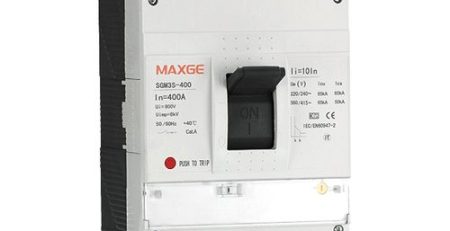



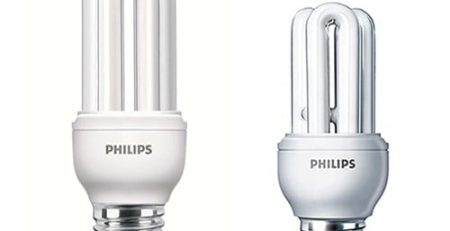

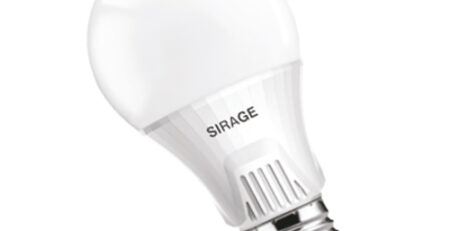
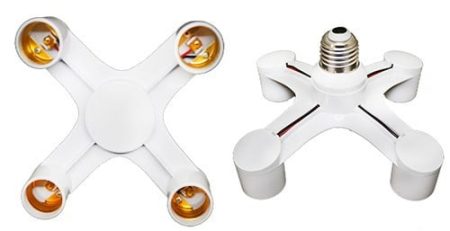

Leave a Reply
You must be logged in to post a comment.